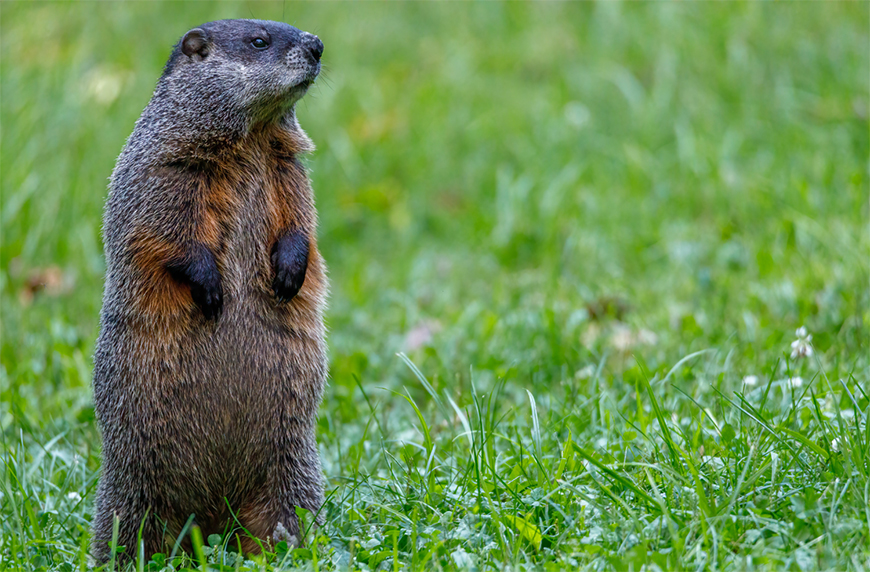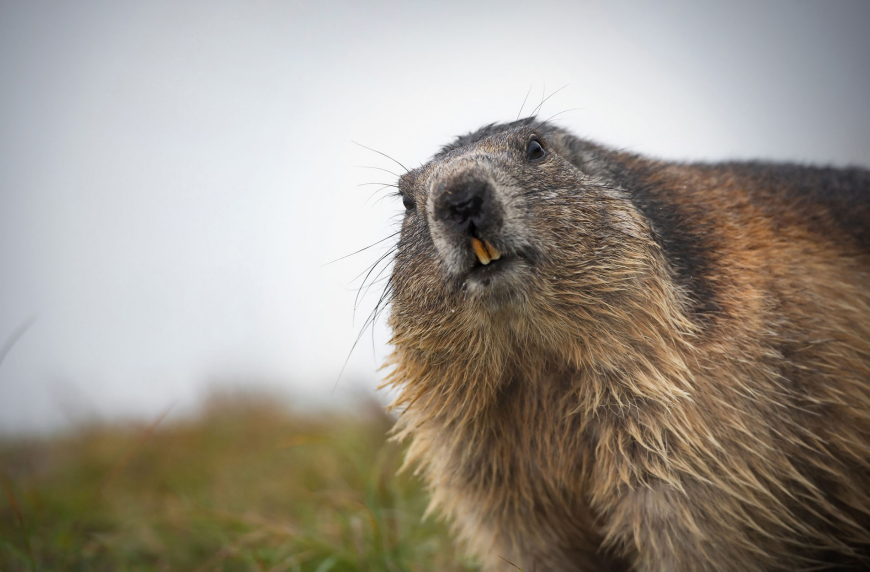7 Facts About Groundhogs You Should Know
Groundhogs should be celebrated beyond Groundhog Day. Here are some groundhog facts you should know, including how they better the planet.

Published
Every February, Punxsutawney Phil, a very special groundhog in Pennsylvania, pokes his cute little head out of a hole and tells the world how much longer winter will last. If he sees his shadow, winter is said to last six more weeks. If he doesn't, spring will arrive early.
Sadly, experts say these predictions are no better than chance. But there's much more to groundhogs than their questionable weather forecasting skills. Or, their ability to dig tunnels under your garden.
These must-know groundhog facts will make you appreciate the furry animal on another level—including ways they help better the planet.
Sadly, experts say these predictions are no better than chance. But there's much more to groundhogs than their questionable weather forecasting skills. Or, their ability to dig tunnels under your garden.
These must-know groundhog facts will make you appreciate the furry animal on another level—including ways they help better the planet.
7 Groundhog Facts You Should Know
1. They Help With Soil Aeration

Groundhogs aren't usually praised for their ability to dig up a lawn, but there's a perk to them doing so. As they're digging, they help aerate the soil with oxygen, making the land healthier. Instead of paying someone to do it for you, these cuties do all the work for free!
2. They Whistle When They're Scared

Groundhogs have gotten the nickname "whistle-pigs" for good reason. When they sense danger, they emit a high-pitched whistle. This warns the rest of their colony when there's a predator (think dogs, foxes, and eagles) nearby.
3. They Provide Free Compost

Groundhogs naturally condition the land by carrying essential fungal spores, plant matter, feces, and other organic matter into their burrows. This benefits plant roots and doesn't require human intervention to accumulate.
4. They're Vegetarians

As vegetarians, groundhogs mostly eat plants, including grass, herbs, bark, twigs, some flowers, and delicious garden veggies when they can get their furry paws on it. (Keep your carrots and tomatoes safe!) They'll also snack on insects, snails, and grubs occasionally.
5. They Create Sweet Digs

Groundhogs don't just dig a hole in the ground to live in. They're way more extravagant than that. Their burrows come complete with different rooms for different purposes, including a bedroom and bathroom. In total, they can be up to 66 feet long with several levels and exits.
6. They Sleep... A Lot

Groundhogs are true hibernators, as they're asleep from late October to early February, depending on where they live. They also go that entire time without eating. In preparation, they eat protein-packed foods for months before their big snooze.
7. Their Teeth Grow in Record Time

Groundhogs have 18 chewing teeth and four incisors, the latter of which are always growing. In fact, they grow 1/16 of an inch every week so they're able to chew away at all the vegetation they want.

The Recycling Process: What Happens Once It Leaves Your Curb
What happens to your recycling once it's picked up? Here's the recycling process, from start to finish, according to experts.

7 Creative DIY Wine Rack Ideas That Use Upcycled Materials
You can make a DIY wine rack by upcycling materials that would otherwise go to waste. These projects utilize records, PVC pipes, and more.

10 Vegan Instant Pot Recipes to Try, from Queso to Pulled 'Pork'
These vegan Instant Pot recipes come together in record time, giving you a healthy meal in 30 minutes or less. Here are our favorites.

